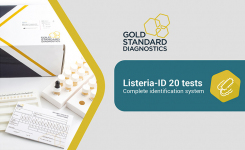Progress has been made in the effort to eliminate infections that commonly threaten hospital patients, including a 46 percent decrease in central line-associated bloodstream infections (CLABSI) between 2008 and 2013, according to a CDC report.
However, additional work is needed to continue to improve patient safety. CDC’s Healthcare-Associated Infections (HAI) progress report is a snapshot of how each state and the country are doing in eliminating six infection types that hospitals are required to report to CDC. For the first time, this year’s HAI progress report includes state-specific data about hospital lab-identified MRSA bloodstream infections and Clostridium difficile infections.
The annual National and State Healthcare-associated Infection Progress Report expands upon and provides an update to previous reports detailing progress toward the goal of eliminating HAIs. The report summarizes data submitted to CDC’s National Healthcare Safety Network (NHSN), the nation’s healthcare-associated infection tracking system, which is used by more than 14,500 health care facilities across all 50 states, Washington, D.C., and Puerto Rico. On any given day, approximately one in 25 U.S. patients has at least one infection contracted during the course of their hospital care, demonstrating the need for improved infection control in U.S. healthcare facilities.
This report focuses on national and state progress in reducing infections occurring within acute care hospitals. Although not covered by the report released today, the majority of C. difficile infections and MRSA infections develop in the community or are diagnosed in healthcare settings other than hospitals. Other recent reports on infections caused by germs such as MRSA and C. difficile suggest that infections in hospitalized patients only account for about one-third of all the healthcare-associated infections.
On the national level, the report found a:
- 46 percent decrease in central line-associated bloodstream infections (CLABSI) between 2008 and 2013.
- 19 percent decrease in surgical site infections (SSI) related to the 10 select procedures tracked in the report between 2008 and 2013.
- 6 percent increase in catheter-associated urinary tract infections (CAUTI) since 2009; although initial data from 2014 seem to indicate that these infections have started to decrease.
- 8 percent decrease in MRSA bloodstream infections between 2011 and 2013.
Read the full report here: http://www.cdc.gov/HAI/pdfs/progress-report/hai-progress-report.pdf























